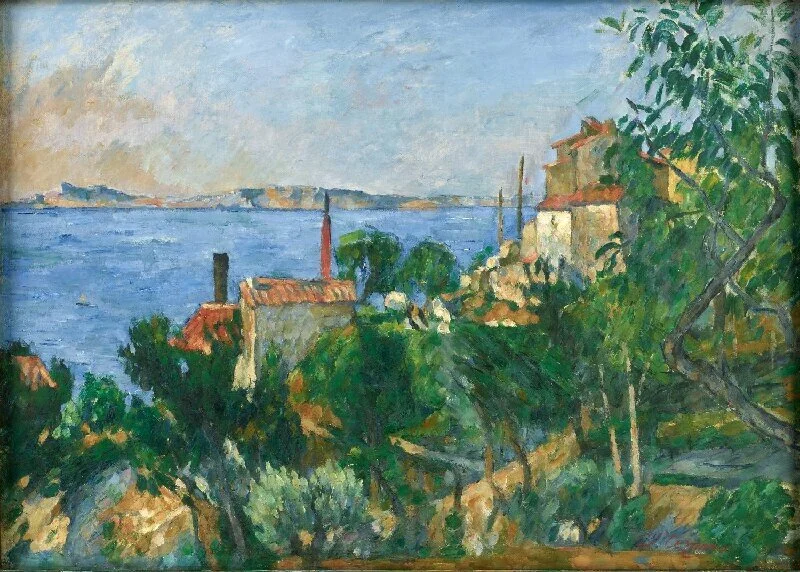The Sea at L’Estaque FWN 96 1876 42cm x 59
Bay of L’Estaque from the East FWN 97 1879 55.5cm x 65.5
Back in the 1980’s, we were taught that there were three kinds of ‘change’: developmental, transitional, and transformational. You probably have some idea of what these kinds of ‘change’ imply: in the forty years from then to now, their meanings have soaked into our unconscious, or into the ‘knowledge-base’ of our society – our collective unconscious. Back then, the example often given was of ‘motor cars’: cars were ‘invented’ way before Carl Benz came up with his petrol powered single cylinder four-stroke engine automobile in 1885. Before then, cars looked a bit like locomotive train engines on wheels. Before Benz, this was the ‘developmental’ type of change – you were just improving what was already there. The Carl Benz car was the first ‘production car’, in the sense that he produced a number of exactly the same vehicles; this is the ‘transitional change’, when you implement a new course of action. And then, of course, the ‘transformational change’ was down to Henry Ford: with the introduction of the production line, and, more importantly, what it enabled – mass production for the masses – that’s us, halleluiah!
Wow, how it seems so strange now to mention car production and transformational change in the same sentence!
The two paintings of the same scene from above L’Estaque, on the other side of the Bay looking across to Marseilles, are just a few years apart in Cezanne’s development. What’s the difference? Well, one has no chimneys; in one the bushes and trees in the foreground are much nearer; the view of the opposite coast is different; one seems to be painted from higher up; the colours are similar but different….is it that these detailed differences make up how the two paintings appear to us? If we were to list every single detail of difference, does that explain how we see them differently?
There seems to be something that distinguishes ‘developmental and transitional’ change from ‘transformational’ change; they don’t somehow seem to be on the same level, as it were; the first type of change is ‘linear’, but transformational change suggests something extra, some kind of step change, some move onto another level. This idea washed about in our collective unconscious until it was consciously expressed by Thomas Kuhn, and his theory of ‘paradigm shift’. Some kinds of change transform not just the detail within the picture, but the frame of reference that is the picture itself.
We have now become aware that our very understanding itself is contextual, always within a frame of reference; but for Cezanne’s time, this was something entirely new: in the sense that it ushered in a new ‘conceptual scheme’, a new way of thinking: it was a paradigm shift; it was a realization that we no longer need the comfort of believing in something absolute and unchanging: we can be happy and secure with change itself. We understand stuff now, quite naturally, as if we’re looking through a particular ‘window’. Whatever window we’re using, we know, and accept its parameters, its conceptual framework. And it does feel ‘natural’ to us, in just the same way that it felt ‘unnatural’ to people of Cezanne’s time: that’s because we human beings have grown up a bit! We have continued our evolution, by collectively, going through a paradigm shift. (and if we dare to go, there are still more shifts awaiting us!)
I think the difference between the two paintings is that the first one is an ensemble of different images; it’s Cezanne’s attempt to paint how he sees the coast at L’Estaque. The later painting is the expression of Cezanne’s intention to be one with the place that is L’Estaque. It is this later one that is more balanced, more integrated – you just want to sit with it, in delight and feel the harmony -because the more paradigm shifts we go through in our lives, the more balanced an outlook we have, and the more integrated we ourselves will be!
Every person you see;
every object,
every situation you encounter,
has something to show you.
Everything points beyond its appearance
and nothing is as it appears to be.
What you are experiencing depends which “layer” you are looking from.
You can go from the surface layers of appearance to the core layers of knowing
by asking : ‘What would love do here?’ “
Michael Alperstein

